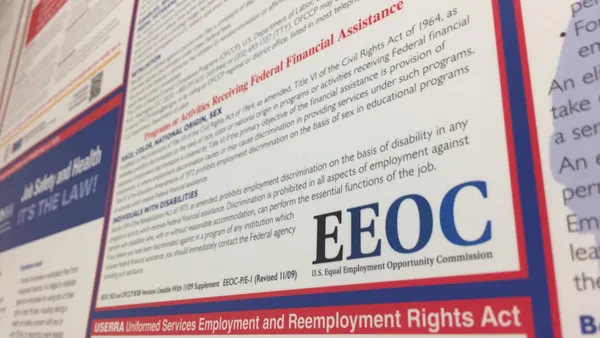Dive Brief:
- The EEOC issued its final enforcement guidance on retaliation and related issues on Monday, the first compliance guide on the issue since 1998.
- The final guidelines come as a result of public input from 60 organizations and individuals over the course of a year and include discussions on topics such as: what employee activity is protected under the law, remedies for retaliation, legal analysis employers can use to determine if evidence supports a retaliation claim and "detailed examples" of the kinds of employer actions that can result in a retaliation charge.
- "Retaliation is asserted in nearly 45% of all charges we receive and is the most frequently alleged basis of discrimination," EEOC Chair Jenny Yang said in the release. The new guidance is set to help employers reduce the likelihood that they would be accused of retaliation and help employees better understand their rights.
Dive Insight:
The new guidance reconciles the separate "interference" provision in the Americans with Disabilities Act (ADA) that "prohibits coercion, threats, or other acts that interfere with the exercise of ADA rights," according to the release.
Retaliation accounts for the most charges filed against private businesses, and is followed closely by racial discrimination (34.7%) and disability discrimination (30.2%). Percentages do not completely add up due to some cases comprising of multiple charges. Some experts claim that retaliation's rise can be attributed to the fact that it is simply easier for an employee to prove retaliation since a 2006 Supreme Court ruling that added guidance. Proving racial or sex discrimination is comparably harder, especially in cases of sexual harassment.
The EEOC also issued two short resource documents alongside the new guidance: a question-and-answer publication and a short Small Business Fact Sheet that condenses the major points.












